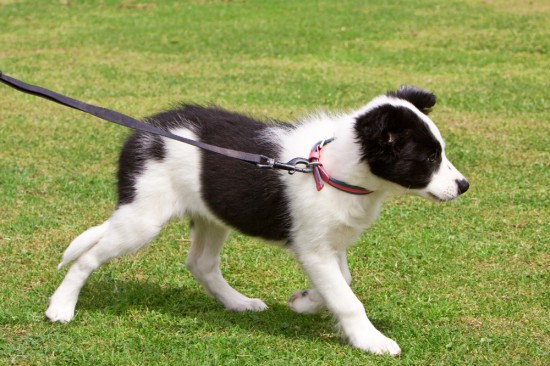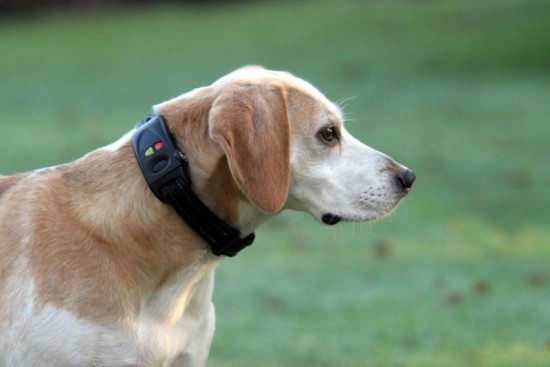

Most dogs are only too keen to go for walkies, and often, just the mention of the ‘w’ word or picking up the lead is enough to send your dog into a tizzy of happy excitement! However, there are a significant amount of dogs who often seem reluctant to go walking at certain times, or if the weather is bad, or are generally not too keen to get moving at all.
All dogs need walking, and even if your dog seems underwhelmed by the idea of getting moving, it is still important to exercise them regularly and try to address the possible causes of their reluctance. There are a variety of factors to take into account when doing this; some that you might not even have thought about! Here are some of the most common reasons behind why dogs may be reluctant to go walking, plus some suggestions on how to tackle them.
Not enjoying the weather is often the main reason behind why many dogs that are usually raring to go may be reluctant to go walking! Some dogs will do anything to avoid going out in the rain, and there is often not much that you can do about this, other than trying to plan their walks around the dryer parts of the day! Consider getting your dog a waterproof coat and possibly even booties that can provide a barrier between the rain and their body, possibly helping to remove some of their reluctance to get out there if they are not too keen to get wet!
Similarly, if it is very hot out, your dog may find it cooler indoors, and not be particularly happy about being dragged out into the sun. Keeping your dog cool when it is hot is important; walk them in the early morning or evening before the heat really kicks in, keep them hydrated, and make sure they do not overdo it.
Snow and ice are other weather phenomenon that can have some canines diving for cover; while some dogs love playing in the snow, others simply find it too cold and unpleasant! If your dog is among their number, again consider investing in a warm coat and possibly booties to keep their core temperature up and help to avoid them getting wet.
Some dogs have more sensitive paws than others, and many dogs will find it unpleasant or even painful to walk across surfaces such as gravel or tarmac. If your dog is among their number, you might want to look into taking them to a dog park or other outdoor space that is grassy and soft under the feet, and watch your reluctant dog transform into a keen canine!
If your dog is obese or overweight, they will become less interested in exercise, and not as enthusiastic about their walks or being particularly active while out with you. It is more important than ever to get an overweight dog moving, so you may just have to persevere until they begin to shed some pounds and their activity levels rise! Be careful not to overstretch an overweight dog; try to walk them little and often rather than taking them on one long, tiring walk.
If your dog suffers from mobility problems, stiff joints or arthritis, this can mean walking and many other forms of movement are uncomfortable for them, and they will be reluctant to get going. First of all, check with your vet about the recommended activity levels for your particular dog, and anything that can be done to ease any pain or discomfort that they might be feeling. Ensure that you don’t push your dog too hard, or encourage them into any activities that may exacerbate their condition. Gentle, regular walks will help to ease any joint stiffness and keep them mobile, raising their quality of life overall.
If your dog is being bullied by other neighbourhood dogs, or finds their walks and the area that you take them to frightening or stressful, over time they will become more and more reluctant to go walking at all. This is an unhappy situation for your dog, so it is important to objectively assess the other dogs that they meet when out walking, how they are getting on, and if anything is scaring them or upsetting them when out. If you find that external issues are the cause of the problem, you may need to find a new place to walk your dog instead.
Energetic walks or runs with your dog are a good way to keep both of you fit, but is your dog up to the task? Never push your dog beyond his fitness levels or willingness to keep up; ensure that he is not overexerting himself when walking, and has plenty of opportunities to rest, cool down and possibly drink some water if you are walking for a long time or being very energetic about it. While it is generally quite hard to over-walk a dog, nevertheless, it is possible, so think about your dog’s health, comfort and enjoyment as well as your own, or you may find that your dog is not so keen to go out with you in the future.
Good training and discipline when walking is an important part of dog ownership, and this is something that should be reviewed on an ongoing basis. Working on training commands and activities, or teaching your dog new skills as part of your walks is a great idea, but make sure that your walks are fun too! Don’t go overboard with training and discipline, and learn to identify when your dog has had enough. Ensure that you dedicate some time at the end of every walk or training session to letting your dog play and have fun, to ensure that he views walking and training as a positive thing and not a chore.
 Has Your Moggy Got A Little Bit Of Pedigree In There Somewhere?
Has Your Moggy Go
Has Your Moggy Got A Little Bit Of Pedigree In There Somewhere?
Has Your Moggy Go
 High Tech Pets – Gadgets For Pets
High Tech Pets –
High Tech Pets – Gadgets For Pets
High Tech Pets –
 Find the horse fences that will prevents lower awareness
Find the horse fences that will prevents lower awareness
Find the horse fences that will prevents lower awareness
Find the horse fences that will prevents lower awareness
 The Mystery of the Bunyip
The Mystery of the Bunyip
 How To Encourage A Shy Or Quiet Dog To Play
How To Encourage
How To Encourage A Shy Or Quiet Dog To Play
How To Encourage
Copyright © 2005-2016 Pet Information All Rights Reserved
Contact us: www162date@outlook.com